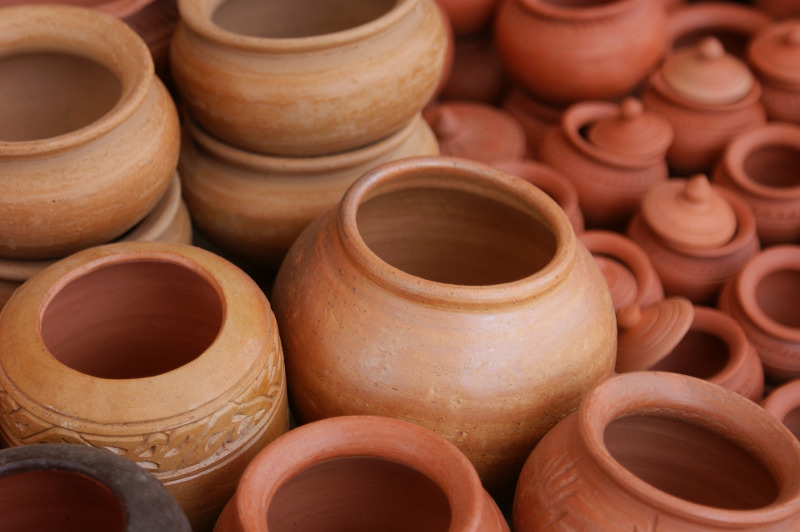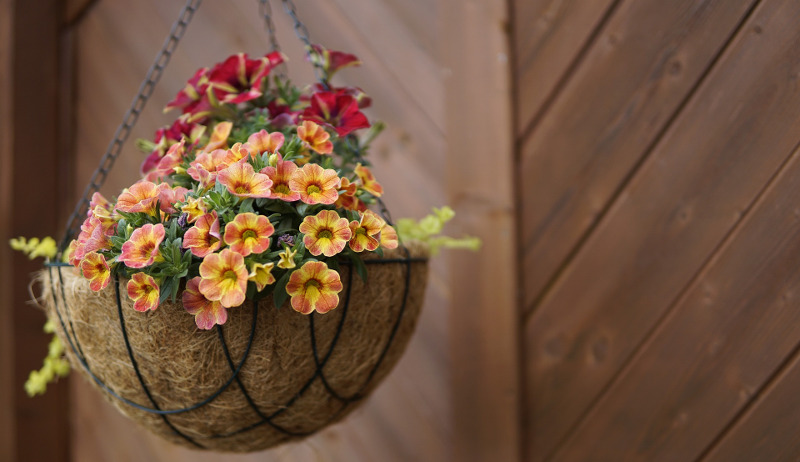This seems as though it may be a bit of a trick question! A lot of variables need to be taken into consideration when making this decision and making the best choice(s). It is necessary to think about longevity of the material, where the planter will be placed, whether it is aesthetically pleasing (you may wish for your planters to blend seamlessly into the surroundings or provide visual interest and a burst of color) and of course, cost.
|
Durability |
Weight |
Color |
Cost |
Overall Grade |
|
|
Best |
Fiberglass |
Pressed Paper |
Fiberglass |
Pressed Paper |
Resin/Plastic |
|
Resin/Plastic |
Coir |
Ceramic |
Coir |
Fiberglass |
|
|
Metal |
Resin/Plastic |
Resin/Plastic |
Wood |
Metal |
|
|
Average |
Ceramic |
Wood |
Metal |
Resin/Plastic |
Ceramic |
|
Terracotta |
Metal |
Terracotta |
Metal |
Terracotta |
|
|
Wood |
Fiberglass |
Wood |
Ceramic |
Wood |
|
|
Coir |
Terracotta |
Coir |
Terracotta |
Coir |
|
|
Worst |
Pressed Paper |
Ceramic |
Pressed Paper |
Fiberglass |
Pressed Paper |
Ceramic Containers
-
Very durable and long lasting but heavy, and subject to chipping and cracking, particularly in freezing temperatures, should be moved somewhere that provides protection in cold climates. Ceramic is heavy and not likely to be blown or tipped over.
-
Ceramic pots are good for wherever they’re needed, larger containers may be heavy and difficult to move.
-
Glazed ceramic pots help to retain moisture, so less watering may be required less often.
-
Colors, color combinations, shapes, textures, are widely available.
-
Generally more expensive than terracotta, plastic, or metal but less costly than fiberglass.
Terracotta Pots
-
Durable, long lasting, but may sun fade, chip, or crack in freezing temperatures and should be moved indoors for winter protection in cold climates. Heavy and not prone to knock or blow overs.
-
Terracotta containers are suitable to any location but may be weighty and difficult to relocate.
-
Terracotta planters are porous and will absorb some of the moisture from soil, and may require more frequent water application.
-
Not a wide range of colors available. Terracotta is most often shades of red, brown, or orange.
-
More expensive than plastic or metal, but less pricey than ceramic, or fiberglass.

Resin/Plastic Planters
-
Semi-durable, long lasting, and lightweight. Extreme temperature changes and the suns rays may weaken the strength with time, as well as cause colors to fade.
-
Suitable for any location though dark colors in the sun may absorb and transfer heat to the soil, damaging roots.
-
Resin and plastic are non-porous, assisting with moisture retention.
-
Can be colored, textured, shaped, to simulate other materials (terra cotta, stone, concrete.)
-
Relatively inexpensive.
Fiberglass Pots
-
Long lasting. Very durable, weather, crack, shatter and fade resistant, and lightweight (even larger sizes.) Waterproof. Scratches and scrapes can be easily buffed out.
-
Equally appropriate in sun or shade though dark colors can absorb heat which may damage plant roots.
-
Gives UV protection for plant roots, non-porous means they won’t leech outside environmental factors into the soil.
-
Offer many sleek, modern shapes, colors, and finishes.
-
More expensive than plastic or terra cotta.
Coir Containers
-
Made from the hull of a coconut (the fibrous material between the husk and the coconut itself) these are a little more durable and last longer than pressed paper.
-
Appropriate in sun or shade, but they will dry out much quicker in sunny locations.
-
These pots are great for starting seeds indoors and they help insulate the roots from slight temperature fluctuations. When it’s time, can be placed directly in the ground, and the roots should grow right through the pot. We recommend gently opening up the bottom of the pot and perhaps tearing up the sides a little. This helps in minimizing transplant shock for the plants. They are able to hold moisture well and allow for good air circulation. Some have a very high salt content in the material, which can be detrimental to plants.
-
Becoming more widely available in a large variety of painted colors and shapes.
-
Basic containers for starting seeds are very inexpensive. Shaped, styled, and painted containers can be expensive.

Metal Containers
-
Durable and long lasting, though subject to corrosion or rust over time, with the exception of galvanized steel. Larger sizes may be very heavy and won’t be easily knocked or blown over but will be more difficult to move.
-
Best in shady locations during the hottest parts of the year/day, may become very hot in sunny areas, drying out the soil more quickly requiring more frequent watering,
-
Do not offer protection or insulation for roots from heat or cold temperatures.
-
Can achieve either a modern industrial or rustic look.
-
Most often affordable, with a variety of price points.
Pressed Paper Pots
-
Biodegradable and short lived, these are likely to need to be replaced yearly.
-
Because they are biodegradable, they’re best used indoors, out of the elements.
-
Pressed paper pots work well in either sunny or shady locations. These pots are great for starting seeds indoors and they help insulate the roots from slight temperature fluctuations. When it’s time, they can be placed right in the ground, minimizing transplant shock.
-
As always, appearance is subjective, but there aren’t a lot of choices in a pressed paper look.
-
Very inexpensive. The lowest cost containers on this list.
Wood Planters
-
Durable and fairly long-lived. Over a long period of time, they may rot from moisture. Dependant upon the type of wood, they may be lightweight or heavy.
-
Suitable material for use anywhere.
-
Not made from man-made materials, they pose no health threats to plants.
-
The look that wood planters can provide is wide and varied. Many kinds of wood are used to build planters, from bamboo to pine, cedar, and fir, each with their own unique beauty.
-
Again, depending on what kind of wood, wood crafted containers can be very inexpensive to very pricey.
Best Outdoor Planters for Winter
For planters that can withstand cold winter temperatures, and freeze/thaw cycles, without having to be moved indoors or at least moved to protected locations, fiberglass, wood, metal, and heavy plastics are the best bet. Any type of clay pot (terracotta or ceramic) are subject to cracking in the cold or temperature swings.
 |
Author Chris Link - Published 3-04-2022 |
